Department of Biomedical Engineering
John A. White, Jr. Engineering Hall
790 W. Dickson St. Suite 120
Fayetteville, AR 72701
Phone: 479-575-4667
Fax: 479-575-5619
Research_PRACTICE
As a new and growing department in the College of Engineering, Biomedical Engineering is designed to serve and attract faculty with exceptional promise and innovation when it comes to building a research programs. Facilities such as the University of Arkansas Engineering Research Center (ENRC) offer a range of resources allowing our faculty, students and collaborators to expand the boundaries of biomedical engineering research. Our faculty utilize the following laboratories to perform research in various areas of the biomedical engineering field:
Mechanobiology and Soft Materials Laboratory
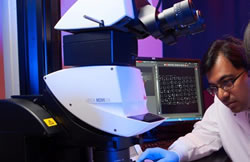 Primary Investigator: Kartik Balachandran, Ph.D.
Primary Investigator: Kartik Balachandran, Ph.D.
The MSML investigates the role of mechanical forces on physiology, function and disease. In particular, we are interested in understanding the interaction between structure and mechanics in regulating biological responses at different length-scales. We employ micro- and nano-fabrication tools to recreate the cellular and tissue environment in the laboratory. We also utilize live imaging, cell/tissue mechanics and tissue engineering techniques to understand several cardiovascular bioengineering problems including cardiac valve calcification, valve fusion and blood-brain barrier dysfunction. Knowledge gained from these studies will help guide the development of medical interventions and regenerative therapies. For more information, please visit the lab website.
Cardiovascular Biomechanics Laboratory
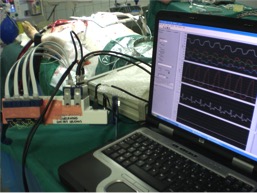
Primary Investigators: Morten Jensen, Ph.D., Dr.Med. & Hanna Jensen, M.D., Ph.D.
Understanding etymology of disease while creating solutions and dedicated devices is the primary focus of biomedical engineering. The CB Lab is an interdisciplinary environment that focuses on building the bridge between the clinical and engineering worlds with an innovative approach to solving critical problems. Using modalities such as ultrasound and MRI combined with research techniques for measuring biomechanical parameters in soft tissue, the results from this work has been adopted by the NIH guidelines for designing certain repair devices for heart surgery. The lab employs both in vivo and in vitro techniques to deliver the best possible solutions that will eventually benefit patients. Our team has more than 20 years of combined academic, clinical and industry experience, providing the optimal balance for surgical technique and device development for cardiovascular intervention. For more information, please visit us at cblab.uark.edu.
Translational Biophotonics and Imaging Laboratory
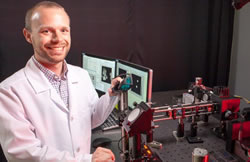 Primary Investigator: Tim Muldoon, M.D., Ph.D.
Primary Investigator: Tim Muldoon, M.D., Ph.D.
The Translational Biophotonics and Imaging Laboratory is interested in creating novel technologies based on optical imaging or spectroscopic methods to aid clinicians in the diagnosis, management, or treatment of disease at the point-of-care. Our work is focused on developing new imaging techniques, methods, and devices, validating these technologies, and translating them to a clinical setting.
Optical imaging techniques offer great promise as point-of-care diagnostic tools. These optical tools can be used to probe tissue for early indicators of disease by examining a wide array of metrics, from biochemical and cellular-level changes to analyzing blood flow and perfusion. With the emergence and dissemination of highly sensitive detectors, light sources, imaging sensors and optical components, optical technologies as point-of-care clinical tools have become a potentially transformational field in the area of biomedicine. For more information, please visit the lab website.
Quantitative Tissue Diagnostics Laboratory
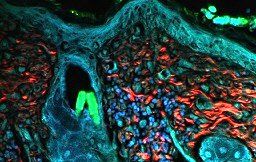 Primary Investigator: Kyle P. Quinn, Ph.D.
Primary Investigator: Kyle P. Quinn, Ph.D.
The Quantitative Tissue Diagnostics Lab is a multi-disciplinary research group focused on developing quantitative biomarkers of tissue structure and function to diagnose disease, assess trauma, and guide therapies. Using imaging modalities such as multiphoton microscopy and fluorescence lifetime imaging, we can non-destructively obtain 3D images from live tissue without adding any stains or dyes. From these images, our group develops and utilizes quantitative analysis techniques to measure changes in cell metabolism and structural organization. Our primary research efforts are focused on exploring applications in the field of wound healing, with the end goal of developing non-invasive real-time quantitative readouts to detect impaired healing and guide care. For more information, please visit us at quinnlab.org.
Functional Optical Imaging and Spectroscopy Laboratory
 Primary Investigator: Narasimhan Rajaram, Ph.D.
Primary Investigator: Narasimhan Rajaram, Ph.D.
Dr. Rajaram’s work is focused on using visible light to investigate the changes in the tumor microenvironment that could identify treatment outcome. Research in the Rajaram lab encompasses basic science investigations of cancer metabolism in cell and animal models using optical microscopy and the development of compact, clinically useful optical technologies that can be used in the clinic for early diagnosis and prediction of response to therapy. For more information, please visit the lab website.
Stem Cell Bioengineering Laboratory
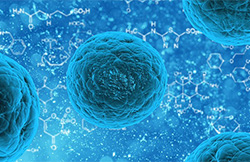 Primary Investigator: Raj Rao, Ph.D.
Primary Investigator: Raj Rao, Ph.D.
The overall goal of the Stem Cell Bioengineering Laboratory is to combine the principles of stem cell biology, biomaterial science, molecular and cell biology and tissue engineering to contribute to better understanding of stem cell properties, development of novel stem cell bioprocessing strategies and enabling technologies towards applications in regenerative medicine. For more information, please visit the lab website.
Regenerative Biomaterials Laboratory
 Primary Investigator: Jeff Wolchok, Ph.D.
Primary Investigator: Jeff Wolchok, Ph.D.
The Regenerative Biomaterials Lab uses cells to build biomaterials that mimic the properties of human tissue. We are currently exploring the use of these biomaterials for the treatment of damaged muscle. Our group also investigates the effects of traumatic brain injury at the cellular level using a novel benchtop "crash tester".